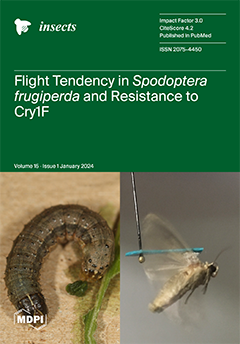Monolepta is one of the diverse genera in the subfamily Galerucinae, including 708 species and 6 sub-species worldwide. To explore the information on the mitogenome characteristics and phylogeny of the section “Monoleptites”, especially the genus
Monolepta, we obtained the newly completed mitochondrial genomes (mitogenomes) of four
Monolepta species using high-throughput sequencing technology. The lengths of these four new mitochondrial genomes are 16,672 bp, 16,965 bp, 16,012 bp, and 15,866 bp in size, respectively. All four mitochondrial genomes include 22 transfer RNA genes (
tRNAs), 13 protein-coding genes (
PCGs), 2 ribosomal RNA genes (
rRNAs), and one control region, which is consistent with other Coleoptera. The results of the nonsynonymous with synonymous substitution rates showed that
ND6 had the highest evolution rate, while
COI displayed the lowest evolution rate. The substitution saturation of three datasets (13
PCGs_codon1, 13
PCGs_codon2, 13
PCGs_codon3) showed that there was no saturation across all datasets. Phylogenetic analyses based on three datasets (
ND1, 15 genes of mitogenomes, and
13 PCGs_AA) were carried out using maximum likelihood (ML) and Bayesian inference (BI) methods. The results showed that mitogenomes had a greater capacity to resolve the main clades than the
ND1 gene at the suprageneric and species levels. The section “Monoleptites” was proven to be a monophyletic group, while
Monolepta was a non-monophyletic group. Based on
ND1 data, the newly sequenced species whose antennal segment 2 was shorter than 3 were split into several clades, while, based on the mitogenomic dataset, the four newly sequenced species had close relationships with
Paleosepharia. The species whose antennal segment 2 was as long as 3 were split into two clades, which indicated that the characteristic of “antennal segment 2 as long as 3” of the true “
Monolepta” evolved multiple times in several subgroups. Therefore, to explore the relationships among the true
Monolepta, the most important thing is to perform a thorough revision of
Monolepta and related genera in the future.
Full article






